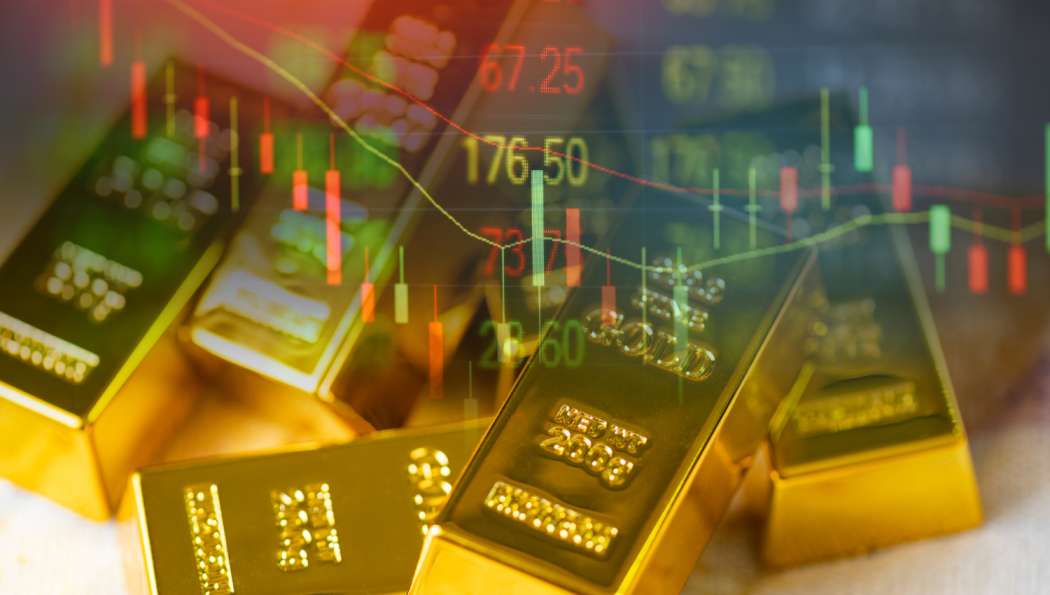Overview
On Thursday, June 27, gold prices edged higher, spotlighting key U.S. inflation data poised to influence the Federal Reserve’s impending interest rate decisions. Spot gold (XAU) rose by 0.3% to $2,303.75 per ounce , after dipping to its lowest level since June 10 on the previous day. Concurrently, U.S. gold futures gained 0.1%, reaching $2,314.25.
Dollar and Treasury Yields
The dollar index weakened by 0.1% after hitting a near two-month high in the previous session. A softer dollar typically enhances gold’s appeal to holders of other currencies. The inverse relationship between the dollar and gold prices remains a pivotal factor, with gold finding support from a moderating U.S. dollar. Benchmark 10-year U.S. Treasury yields also held firm, contributing to the complex dynamics influencing gold prices.
Federal Reserve and Inflation Data
Traders are keenly anticipating U.S. inflation data, including the first-quarter gross domestic product estimates and the personal consumption expenditures (PCE) inflation data expected later this week. The CME FedWatch Tool indicates a 62% probability of a rate cut in September. Fed Governor Michelle Bowman reiterated her baseline view that inflation will decline further with the policy rate held steady, suggesting that eventual rate cuts could become appropriate if inflation trends towards the 2% target.
Geopolitical Tensions and Market Sentiment
Geopolitical tensions continue to play a significant role in shaping gold prices. Recent escalations in the Middle East, have stoked fears of a broader conflict that could involve other regional powers. These tensions, coupled with a less dovish stance from the Federal Reserve, have created a “tug of war” for gold prices, balancing between geopolitical risks and monetary policy expectations.
Market Performance and Analysts’ Insights
Despite the recent dip, gold prices have generally found support around the $2,300 level. Han Tan, chief market analyst at Exinity Group, noted that dips below $2,300 since April have been short-lived, suggesting robust underlying support for gold. However, if the prospects for Federal Reserve rate cuts diminish, gold bulls may struggle to maintain prices above this psychological threshold.
Tim Waterer, chief market analyst at KCM Trade, highlighted that rising bond yields and a strong dollar have posed challenges for gold. If the upcoming PCE inflation data fosters pessimism about imminent rate cuts, gold could potentially slip towards the $2,270 level.
Other Precious Metals
In addition to gold, other precious metals experienced mixed performance. Spot platinum (XPT) fell by 0.6% to $1,004.40, and palladium (XPD) declined by 0.7% to $922.22. Conversely, silver (XAG) saw a marginal increase of 0.1% to $28.74.
Global Market Context
Broader financial markets exhibited nervousness about inflation. Asian shares fell, and bond yields spiked, influenced by rising U.S. yields and inflation concerns. The yen’s slide past 160 per dollar raised speculation about potential intervention by Japanese authorities. The dollar’s strength, bolstered by high U.S. yields, impacted other currencies, contributing to the overall market volatility.
Risk-On and Risk-Off Sentiments
The market’s oscillation between risk-on and risk-off sentiments significantly impacts gold prices and other asset classes. Risk-on sentiment, characterized by investor optimism and a preference for higher-yielding assets, typically leads to reduced demand for safe-haven assets like gold. This sentiment is often driven by positive economic data, corporate earnings reports, and progress in resolving geopolitical tensions. For instance, easing trade tensions between major economies or signs of a robust economic recovery can prompt investors to shift capital from gold into equities and other riskier investments. Conversely, risk-off sentiment, which is prevalent during periods of heightened uncertainty or market turmoil, drives investors towards safe-haven assets. Factors such as escalating geopolitical conflicts, disappointing economic data, or significant market corrections can trigger this sentiment, leading to increased demand for gold as a store of value and a hedge against potential losses in riskier assets.
Current Market Dynamics
The current market environment reflects a blend of both risk-on and risk-off sentiments. On one hand, persistent inflation concerns and the Federal Reserve’s cautious stance on interest rate cuts contribute to a risk-off sentiment, bolstering gold prices. Investors remain wary of the potential for prolonged inflation and the economic impacts of maintaining higher interest rates, prompting a flight to safety. On the other hand, periods of risk-on sentiment are evident in market reactions to positive economic indicators, such as strong GDP growth or improvements in the labor market, which can lead to temporary sell-offs in gold as investors pivot towards equities and other growth-oriented assets. This duality is further complicated by geopolitical developments, with ongoing conflicts and diplomatic tensions adding layers of uncertainty. As a result, gold prices continue to be influenced by a dynamic interplay of risk-on and risk-off sentiments, with market participants closely monitoring economic data and geopolitical events to gauge their investment strategies.
Conclusion
Gold prices remain under the influence of a confluence of factors, including U.S. inflation data, Federal Reserve policy expectations, geopolitical tensions, and broader market dynamics. While the recent dip to two-week lows highlights the market’s sensitivity to these factors, the overall outlook for gold hinges on upcoming economic data and central bank policies. As traders and investors navigate these complexities, gold’s role as a hedge against inflation and geopolitical risks continues to be a focal point in the market.
Disclaimer: This is not an Investment Advice. Investing and trading in currencies involve inherent risks. It’s essential to conduct thorough research and consider your risk tolerance before engaging in any financial activities.



